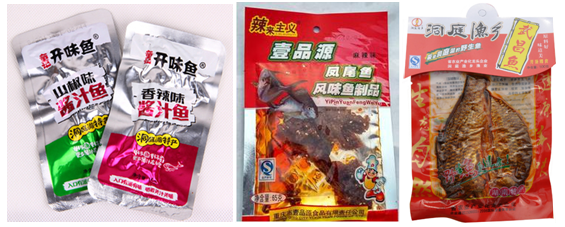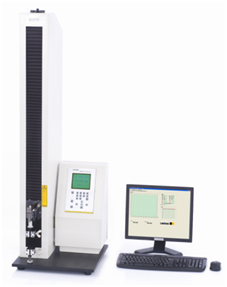Abstract: Composite fastness is an important part of evaluating the compatibility of soft plastic packaging and packaged contents, and it is an important basis for determining whether soft plastic packaging can be used normally. This paper takes the aluminum-plastic composite film of a certain flavor fish packaging as an example to test the peel strength change of plastic packaging before and after exposure to high temperature vegetable oil, and passes the test procedure, test principle, equipment XLW (PC) intelligent electronic tensile testing machine parameters and scope of application. The introduction provides a reference for the analysis of the composite fastness of the packaging materials and the compatibility of the products.
Key words: composite fastness, peel strength, compatibility, intelligent electronic tensile testing machine, flavor fish, aluminum-plastic composite film, layering
1, meaning
The compatibility of food packaging and food contents means that the packaging can satisfy the requirement that the contents do not deteriorate and the toxic and harmful substances are not transferred to the contents in the space and time range in which the products are circulated, and the packaging looks beautiful and conforms. The market positioning of the product can accurately convey product information. This requires the package to maintain good barrier properties, physical and mechanical properties and hygienic performance before and after packaging for the contents, and the printing design is exquisite. Composite membrane materials are an important part of food packaging. These materials mainly combine different kinds of single-layer membranes by adhesive to exert the performance advantages of each single-layer membrane. For such materials, the peel strength is An extremely important physical and mechanical property, which characterizes the composite fastness of each single layer film. The level of this index directly affects the overall oxygen permeability, water vapor transmission rate, physical and mechanical properties such as impact resistance and puncture resistance.
Flavored fish is a processed product of aquatic products containing certain oils and fats. The commonly used packaging includes plastic composite film, aluminum-plastic composite film, etc. If the adhesive used in packaging is poor in oil resistance or high temperature resistance, it is used for After the flavored fish is packaged, the composite fastness is reduced, and even delamination occurs. This phenomenon not only reduces the oxygen barrier property, impact resistance and puncture performance of the material, but also causes the quality fish to suffer from oxidative deterioration, mold, and bag breakage. It also affects the appearance of the product and the brand image. Therefore, it is necessary to analyze the composite fastness of the package and the compatibility of the flavored fish.

Figure 1 Common flavor fish packaging
2, test samples
In this test, an aluminum-plastic composite film for flavor fish packaging was purchased by a company as a test sample.
3. Test basis
This test is based on the relevant provisions of the product standard GB/T 21302-2007 "Composite film for packaging, bag general rules" in high temperature medium properties.
4, test equipment
The main equipment of this test is XLW (PC) intelligent electronic tensile testing machine, which is independently developed and produced by Jinan Languang Electromechanical Technology Co., Ltd.

Figure 2 XLW (PC) intelligent electronic tensile testing machine
4.1 Principle of the test
The composite fastness of the composite film material and the compatibility of the food contents were analyzed by comparing the changes in the peel strength of the material before and after the contact with the contents of the simulant. The peeling strength is the force value required to peel off a certain width of the composite film material. During the test, the two films previously peeled off by the sample are respectively clamped in the upper and lower clamps of the intelligent electronic tensile testing machine, and the upper clamp is configured with a strong value. The moving clamp of the sensor and the displacement sensor drives the sample to peel off when the upper clamp moves upward according to the set speed, and the force value sensor records the change of the force value during the peeling process in real time, thereby obtaining the peeling strength of the sample.
4.2 Equipment parameters
Force sensors of 500 N and 50 N are available; according to relevant standards, the equipment is available in 50 mm/min, 100 mm/min, 150 mm/min, 200 mm/min, 250 mm/min, 300 mm. /min, 500 mm / min seven test speeds, can be freely set according to test standards; 1000 mm long stroke can meet the test of large deformation rate materials; limit protection, overload protection, automatic return and power failure memory The intelligent configuration ensures the user's operation safety; one test machine integrates seven independent test procedures such as stripping, stretching and tearing, providing users with a choice of various test items.
4.3 Scope of application
(1) This equipment can be used for testing the peel strength, tensile properties, tensile strength, tensile strength and deformation rate, tear resistance, heat seal strength performance and puncture resistance of plastic film, sheet and other materials. It can be used for infusion bag cover, soft rubber stopper, oral liquid cap puncture/pull force test; can be used for tape unwinding force, Plastic Bottle anti-pressure, combination cover and jelly cup, yogurt cup cover film opening force, etc. Testing with packaging performance.
(2) This equipment can meet ISO 37, GB/T 10004, GB/T 21302, GB/T 2792, GB 8808, GB/T 1040.1 ~ GB/T 1040. 5, QB/T 2358, QB/T 1130, More than 20 domestic and international standards such as ASTM D 882, ASTM D 1938, and ASTM D 3330.
5, the test process
(1) Take 5 samples of the bag and put a certain amount of olive oil into it, and vent the seal.
(2) Place the package containing olive oil in a high-pressure cooking pot, pressurize at 121 ° C for 40 min, cool, depressurize, and take out the sample. Pour off the vegetable oil and dry the surface of the sample with filter paper.
(3) Five specimens each having a width of 15.0 mm and a length of 15 cm were cut longitudinally along the untreated and treated bags.
(4) Manually peel off the heat seal layer and the inner inner layer from one end of each sample, and peel off the length by about 5 cm.
(5) Open the XLW (PC) intelligent electronic tensile testing machine, set the sample width, test speed, sample name and other parameters, take one of the pre-stripped samples, and clamp the two ends of the stripped part separately. In the lower clamp, the longitudinal axis of the stripped portion is coincident with the center line of the upper and lower clamps. Click on the test option, the test starts, the upper clamp moves upwards to peel the sample, and the device automatically records and displays the peel force value during the test. After the test is over, the device displays the peel force of the test sample. Repeat the loading test until all 10 samples have been tested.
6, the results
This test tests the longitudinal peel strength between the sample heat seal layer and the inner inner layer. The average peel strength of the untreated 5 samples is 6.314 N/15 mm, and the peel strength of the 5 samples after the treatment. The average value is 4.767 N/15 mm and the peel strength is reduced by about 25%.
7. Conclusion
Peel strength is one of the important properties of composite film materials, and its compatibility with the contents of packaged foods is an important factor in determining the suitability of packaging. In this paper, the compatibility of flavor fish and aluminum-plastic composite film samples in composite fastness was analyzed. The sample package after loading olive oil was reduced by 25% at high temperature, which was in accordance with GB/T 21302. According to the 30% regulation, the sample has good compatibility with flavored fish. From the perspective of the entire test process, the test is simple, the equipment is easy to operate, and the degree of intelligence is high. Jinan Languang Electromechanical Technology Co., Ltd. is a high-tech enterprise specializing in R&D and production of packaging testing equipment. It also has a professional packaging testing laboratory. The customer group covers food, packaging, medicine, daily chemicals, automobiles, electronics, and Three-way testing institutions, universities and research institutes and other industries and fields, to understand the relevant testing equipment and testing services information, you can visit the map! The more you understand, the more trust! Labthink is looking forward to enhancing technical communication with enterprises and institutions in the industry. Cooperation!
Stainless Steel Vacuum Food Containers are made from high-grade 18/8 stainless steel. This material is food grade, non-toxic, durable and easy to clean.
And we got a lot of different kinds of Stainless Steel Bottles. For example: Stainless Steel Cola Bottle, a classic design that is popular in the market and easy to use, also looks good. Speaking of looking, our Cola Bottle comes in changeable colors and diverse patterns.
Vacuum Storage Containers,Vacuum Containers for Food,Vacuum-Sealed Food Storage Container,Vacuum Seal Food Storage,Vacuum Seal Containers,Vacuum Food Storage Container
Ningbo Auland International Co.,Ltd. , https://www.everdrinkingbottle.com